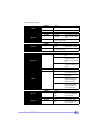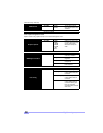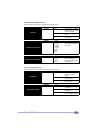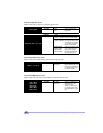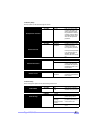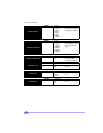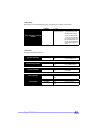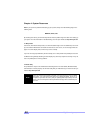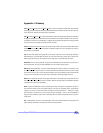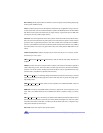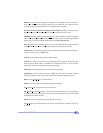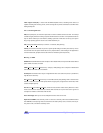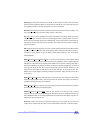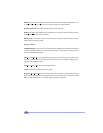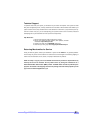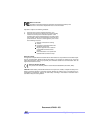
http://www.tyan.com
46
Bus mastering: allows peripheral devices and IDEs to access the system memory without going through
the CPU (similar to DMA channels).
Cache: a temporary storage area for data that will be needed often by an application. Using a cache low-
ers data access times, since the needed information is stored in the SRAM instead of in the slow DRAM.
Note that the cache is also much smaller than your regular memory: a typical cache size is 512KB, while
you may have as much as 4GB of regular memory.
Cache size: refers to the physical size of the cache onboard. This should not be confused with the cache-
able area, which is the total amount of memory which can be scanned by the system in search of data to
put into the cache. A typical setup would be a cache size of 512KB, and a cacheable area of 512MB. In
this case, up to 512KB of the main memory onboard is capable of being cached. However, only 512KB of
this memory will be in the cache at any given moment. Any main memory above 512MB could never be
cached.
Closed and open jumpers: jumpers and jumper pins are active when they are “on” or “closed”, and inac-
tive when they are “off” or “open”.
CMOS (C
omplementary Metal-Oxide Semiconductors): chips that hold the basic startup information for
the BIOS.
COM port: another name for the serial port, which is called as such because it transmits the eight bits of
a byte of data along one wire, and receives data on another single wire (that is, the data is transmitted in
serial form, one bit after another). Parallel ports transmit the bits of a byte on eight different wires at the
same time (that is, in parallel form, eight bits at the same time).
DDR (D
ouble Data Rate): is a technology designed to double the clock speed of the memory. It activates
output on both the rising and falling edge of the system clock rather than on just the rising edge, poten-
tially doubling output.
DIMM (D
ual In-line Memory Module): faster and more capacious form of RAM than SIMMs, and do not
need to be installed in pairs.
DIMM bank: sometimes called DIMM sockets, because the physical slot and the logical unit are the
same. That is, one DIMM module fits into one DIMM socket, which is capable of acting as a memory
bank.
DMA (D
irect Memory Access): channels that are similar to IRQs. DMA channels allow hardware devices
(like soundcards or keyboards) to access the main memory without involving the CPU. This frees up CPU
resources for other tasks. As with IRQs, it is vital that you do not double up devices on a single line. Plug-
n-Play devices will take care of this for you.
Doze mode: in this mode, only the CPU’s speed is slowed.



